SLOPE OF A LINE
Subscribe to our ▶️ YouTube channel 🔴 for the latest videos, updates, and tips.
It is the change in y for a unit change in x along the line and usually denoted by the letter m.
Slope is sometimes referred to as 'rise over run'.
Because the fraction consists of the rise (the change in y, going up or down) divided by the run (the change in x, going from left to the right).
The figures shown below illustrate this.
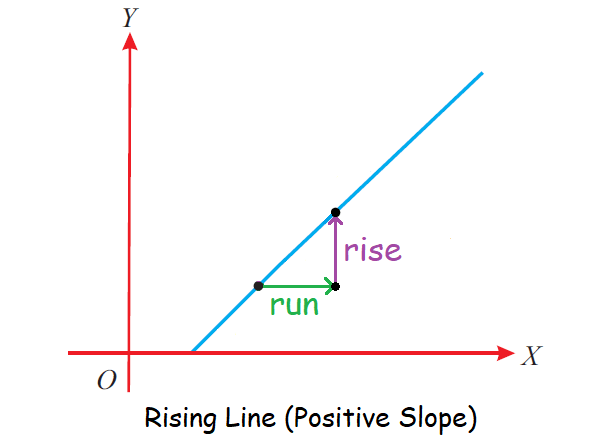
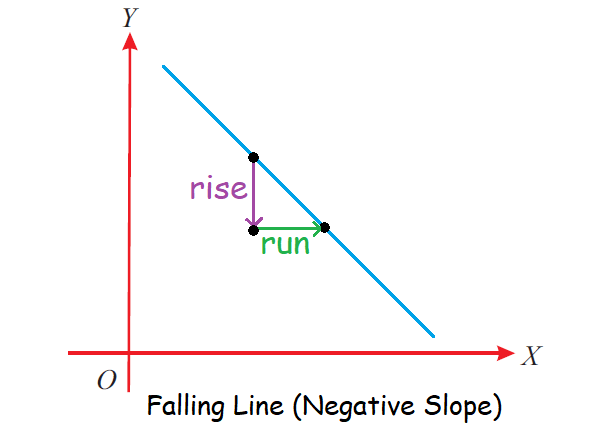
The simplest way to look at the slope is
ʳⁱˢᵉ⁄ᵣᵤₙ
(rise over run)
In the formula (ʳⁱˢᵉ⁄ᵣᵤₙ), we can "rise" up or down... but, we ALWAYS "run" to the right.
If the "rise" is up, it will have a positive value and if the "rise" is down, it will have a negative value.

Finding Slope Using the Two Points on the Line
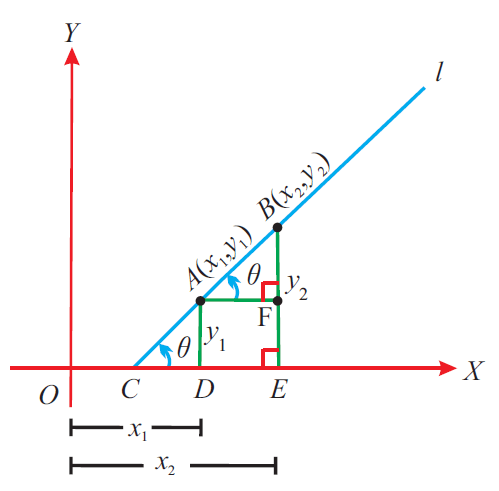
From the above figure, the slope of the straight line joining the points A (x1, y1) and B (x2, y2) is
That is,
If the equation of a straight line given in general form
ax + by + c = 0,
then, the formula to find slope of the line is
Let θ be the angle between the straight line l and the positive side of x - axis.
The figure given below illustrates this.
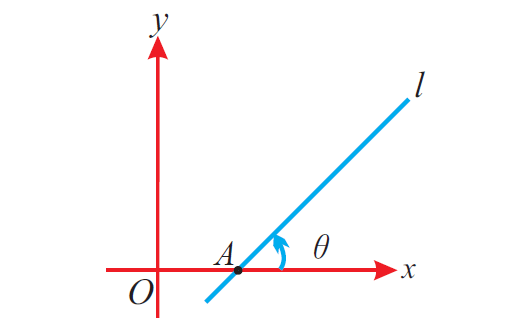
Then, the formula to find slope of the line is
m = tanθ
In the general form of equation of a straight line
ax + by + c = 0,
(i) If x term is missing, then the line will be parallel to x-axis and its slope will be zero.
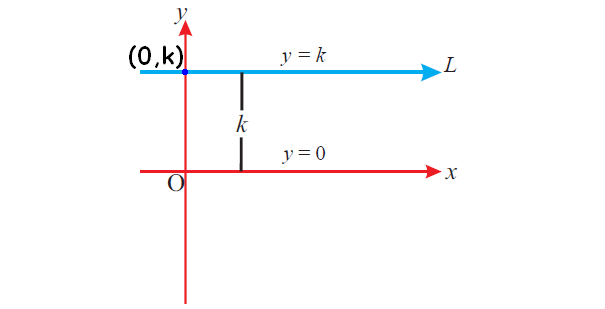
We know that
In the above figure, the value of y is fixed and that is k.
So, there is no change in y and change in y = 0.
(i) If y term is missing, then the line will be parallel to y-axis and its slope will be undefined.
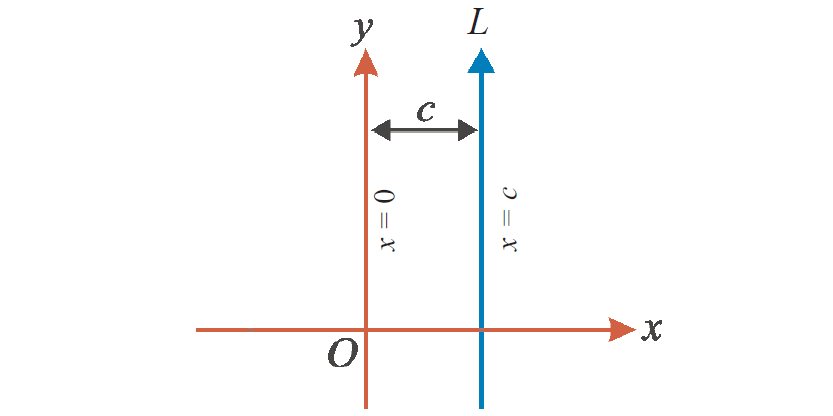
In the above figure, the value of x is fixed and that is c.
So, there is no change in x and change in x = 0.
Slope of the coordinate axes x and y.
(i) Slope of x axis zero.
(ii) Slope of y axis undefined.
Slope of a Line - Positive or Negative or Zero or Undefined
When we look at a straight line visually, we can come to know its slope easily.
To know the sign of slope of a straight line, always we have to look at the straight line from left to right.
The figures given below illustrate this.
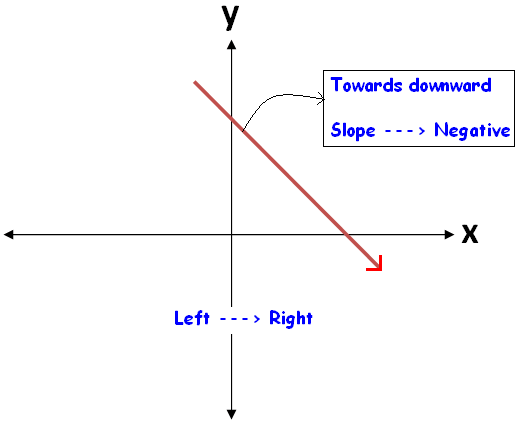
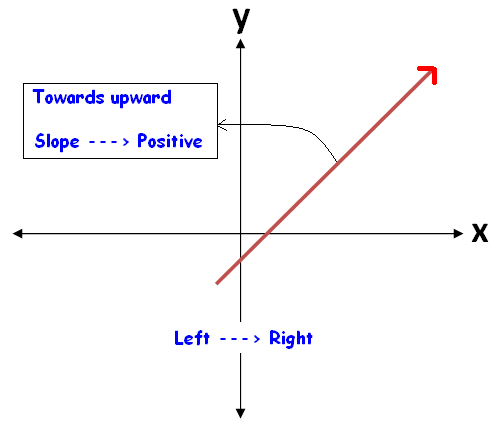
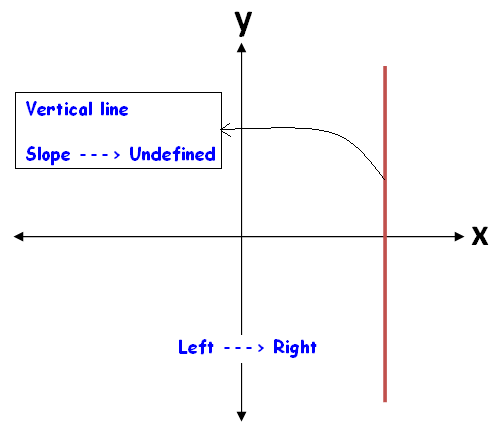
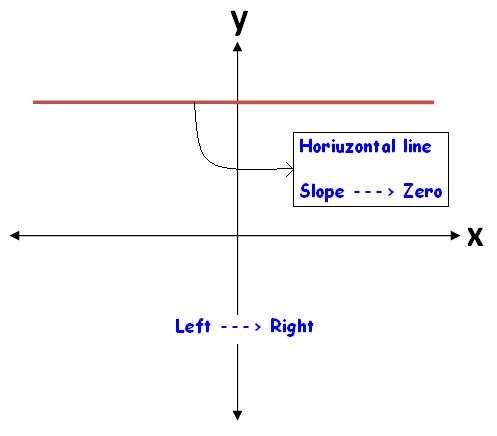
Solved Problems
Problem 1 :
Find the angle of inclination of the straight line whose slope is 1/√3.
Solution :
Let θ be the angle of inclination of the line.
Then, slope of the line, m = tan θ.
Given : Slope = ¹⁄√₃.
So, we have
tanθ = ¹⁄√₃
θ = 30°
So, the angle of inclination is 30°.
Problem 2 :
Find the slope of the straight line passing through the points (3, -2) and (-1, 4).
Solution :
Formula to find slope of a line joining (x1, y1) and (x2, y2) :
Substitute (x1, y1) = (3, -2) and (x2, y2) = (-1, 4).
Problem 3 :
Using the concept of slope, show that the points A(5, -2), B(4, -1) and C(1, 2) are collinear.
Solution :
Formula to find slope of a line joining (x1, y1) and (x2, y2) :
Using the above formula, slope of the line AB joining the points A (5, - 2) and B (4- 1) :
Slope of the line BC joining the points B (4- 1) and C (1, 2) :
slope of AB = slope of BC
Also, B is the common point.
So, the points A, B and C are collinear.
Problem 4 :
Find the slope of the line 3x - 2y + 7 = 0.
Solution :
When the general form of equation of a straight line is given, the formula to find slope is
In the given line 3x - 2y + 7 = 0, coefficient of x =3 and coefficient of y = -2.
Then the slope is
m = -³⁄₍₋₂₎
m = ³⁄₂
Problem 5 :
If the straight line 5x + ky - 1 = 0 has the slope 5, find the value of k.
Solution :
When the general form of equation of a straight line is given, the formula to find slope is
In the given line 3x - 2y + 7 = 0, coefficient of x = 3 and coefficient of y = k.
Then the slope is
m = -⁵⁄k
Given : Slope = 5.
5 = -⁵⁄k
Multiply both sides by k.
k = -1
Divide both sides by 5.
k = -1
Subscribe to our ▶️ YouTube channel 🔴 for the latest videos, updates, and tips.
Kindly mail your feedback to v4formath@gmail.com
We always appreciate your feedback.
About Us | Contact US | Privacy Policy
©All rights reserved. onlinemath4all.com
Recent Articles
-
10 Hard SAT Math Questions (Part - 39)
Dec 11, 25 05:59 PM
10 Hard SAT Math Questions (Part - 39) -
10 Hard SAT Math Questions (Part - 38)
Dec 08, 25 12:12 AM
10 Hard SAT Math Questions (Part - 38) -
SAT Math Practice
Dec 05, 25 04:04 AM
SAT Math Practice - Different Topics - Concept - Formulas - Example problems with step by step explanation

